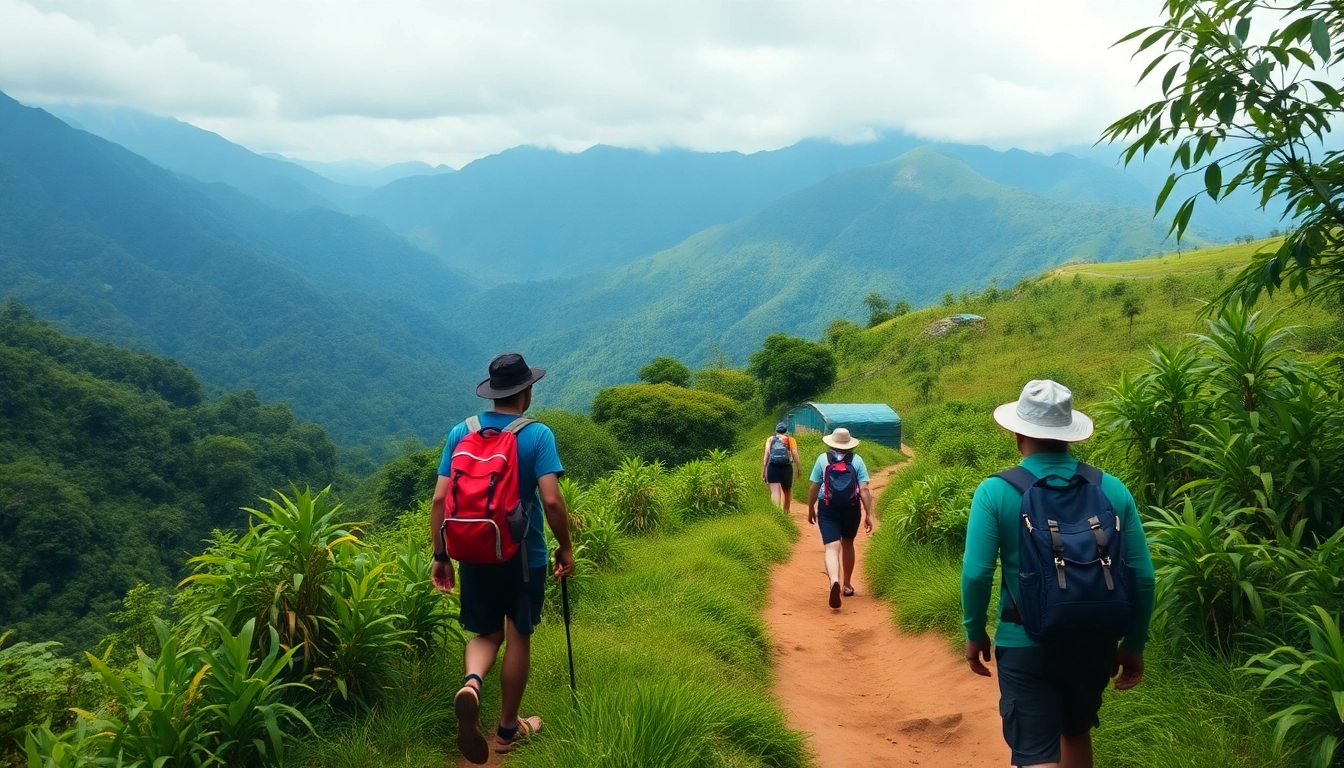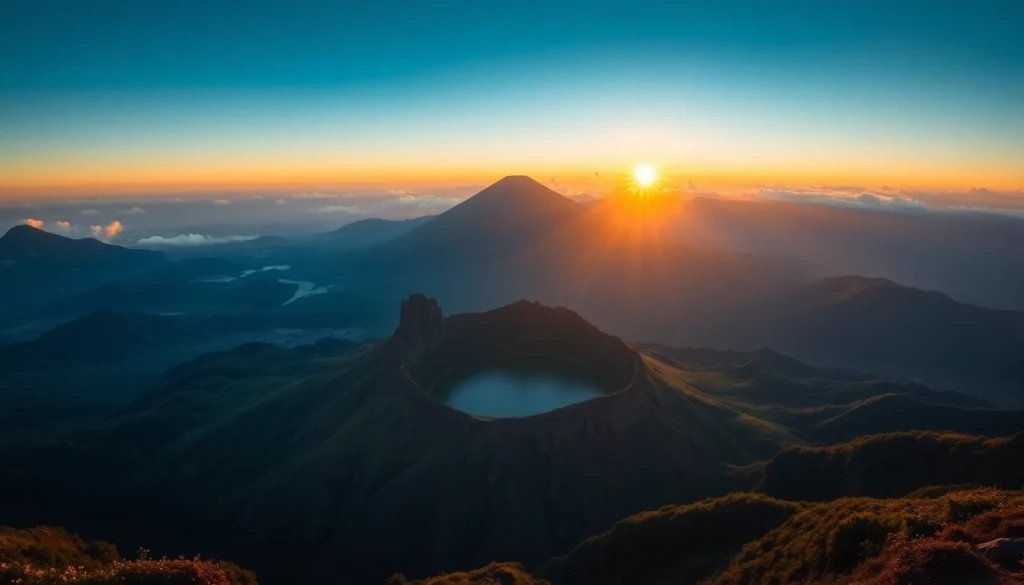Introduction to Hiking in Indonesia
Indonesia, an archipelago renowned for its breathtaking landscapes and rich cultural diversity, offers an exceptional playground for outdoor enthusiasts. Among the myriad outdoor activities available, hiking stands out as a premier way to explore the country’s natural wonders. Whether you’re a seasoned trekker or a beginner seeking nature’s tranquility, Indonesia’s diverse terrains provide endless opportunities for adventure and exploration. From volcanic peaks to lush rainforests and sacred lakes, hiking in Indonesia allows visitors to connect deeply with nature, experience unique ecosystems, and immerse themselves in local cultures.
Understanding hiking and its appeal in Indonesian landscapes
Hiking, at its core, is a physically engaging activity involving long walks through natural environments along designated trails or unmarked paths. Its appeal in Indonesia stems from the country’s extraordinary geographical features, including active volcanoes, dense jungles, coastal cliffs, and pristine lakes. The allure lies not only in reaching a summit or sightseeing but also in the journey itself—an act of mindfulness, adventure, and discovery.
For example, hiking in Indonesia is often about more than just physical challenge; it is a cultural experience as well. Many trails lead through traditional villages where travelers encounter local customs, cuisine, and artisanal crafts. This fusion of natural beauty and cultural immersion makes hiking a holistic activity that nourishes both body and spirit.
To truly understand the essence of hiking in Indonesia, it’s important to recognize its role as a means of environmental appreciation and conservation. As you traverse these scenic terrains, you not only witness pristine landscapes but also contribute to preserving them through responsible tourism.
In fact, many online resources emphasize the health and wellness benefits of hiking, which include physical fitness, mental clarity, and reduced stress. Indonesia’s terrains are particularly suitable for diverse skill levels, offering beginner-friendly trails as well as challenging routes for experienced hikers. If you want to discover stunning destinations like Mount Rinjani or Kelimutu Lakes, ensure you are well-prepared for your adventure, which we will explore in the next sections.
Historical and cultural significance of hiking in Indonesia
Historically, outdoor activities like hiking and trekking have played a significant role in Indonesia’s cultural landscape. The indigenous communities have long maintained spiritual and ritualistic connections with their natural surroundings, considering mountains, lakes, and forests as sacred sites. For instance, Mount Rinjani is revered by local Sasak and Lombok inhabitants, who believe it to be a dwelling of divine spirits.
During the colonial period, hiking evolved as a leisure activity among the Dutch and Indonesian elites, promoting exploration of the islands’ natural beauty. Today, hiking also serves as a form of environmental activism, advocating for ecological preservation amidst rapid urbanization.
In contemporary Indonesia, hiking has become a popular social and recreational activity, often associated with national pride and environmental stewardship. Events, such as mountain climbs and conservation campaigns, foster community engagement and raise awareness about the importance of protecting Indonesia’s diverse ecosystems.
This cultural dimension enhances the spiritual experience for many hikers, transforming physical activity into a meaningful journey that intertwines nature, tradition, and personal growth.
Common misconceptions about hiking activities
Despite its growing popularity, several misconceptions about hiking persist, which can discourage potential enthusiasts or lead to unsafe practices.
- Hiking is only for the physically fit: While a certain level of fitness enhances the experience, many trails are accessible to beginners and families. Proper planning and trail selection are key to a safe and enjoyable hike.
- Hiking requires expensive gear: Basic equipment like comfortable shoes, suitable clothing, and hydration supplies are often sufficient. Many trails do not demand technical gear unless tackling extreme terrain or multi-day treks.
- Hiking is dangerous: With adequate preparation, knowledge of trail conditions, and safety measures, hiking can be a safe outdoor activity. Respecting nature and understanding one’s limits are essential practices.
- Hiking is only about physical activity: It is also a mental retreat, offering stress relief, mindfulness, and a chance to disconnect from daily life stresses.
By dispelling these misconceptions, more individuals can confidently embrace hiking as a rewarding and safe outdoor activity in Indonesia.
Preparing for a Safe and Enjoyable Hiking Experience
Essential gear and equipment for hiking in Indonesia
Appropriate gear can make or break your hiking adventure. Basic essentials include sturdy hiking shoes suitable for varied terrains, lightweight breathable clothing, a hat or cap for sun protection, and a reliable backpack. Don’t forget to carry navigation tools such as maps or GPS devices, a first aid kit, insect repellent, and sufficient water and snacks.
For longer or more challenging hikes, additional gear like trekking poles, layered clothing, and emergency shelters may be necessary. Research specific trail requirements and weather conditions to tailor your equipment needs.
Physical and mental preparation tips
Building endurance through regular cardiovascular training, strength exercises, and flexibility routines is crucial before undertaking strenuous hikes. Mental preparedness involves understanding the trail difficulty, planning logistics, and managing expectations. Practice mindfulness techniques to stay calm and focused during the hike.
Gradually increasing hike difficulty and duration helps adapt your body and mind. Joining preparatory hikes with local groups or guides can also boost confidence and skills.
Planning your trail and safety precautions
Thorough research on trail conditions, weather forecasts, and potential hazards ensures a safe trip. Share your itinerary with friends or family, carry a fully charged mobile phone, and consider hiring local guides for unfamiliar terrains.
Always prioritize environmental safety—stay on designated paths, avoid disturbing wildlife, and carry out all trash. Respect local customs and preserve the natural beauty for future generations.
Popular Hiking Trails Across Indonesia
Mount Rinjani: Challenges and scenic rewards
Mount Rinjani, Indonesia’s second-highest volcano on Lombok Island, offers an iconic multi-day trek renowned worldwide. With an elevation of 3,726 meters, it presents demanding ascents and rugged terrains, suitable for experienced hikers. The journey rewards climbers with spectacular crater lakes, geothermal hot springs, and panoramic views of neighboring islands.
Preparation is critical due to challenging weather conditions, altitude sickness risks, and terrain variability. Guided tours are recommended for safety and logistical support. Campsites along the route provide opportunities to immerse in starry skies and volcanic landscapes unique to Indonesia.

